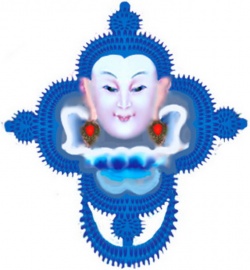The philosophy of Tai Ji Quan (太极拳)
“Tai Ji Quan” has been translated as “The Grand Ultimate Boxing,” but that may be a little confusing. Ji means an extreme, and a good example is the North and South Poles of the earth. In Chinese the North Pole is “beiji” and the South Pole is “nanji.” In a philosophical sense when we talk about the Poles we are talking about Yin and Yang. In Chinese philosophy Tai Ji is the Absolute (or “Grand Ultimate”), the primary source of all things.
Following this metaphor of the Poles, we are not interested in the general area around the poles. We are not interested in the Arctic Circle, because something unique happens at the exact North or South Pole. “At its extreme Yin becomes Yang and extreme Yang becomes Yin.” We want to stand on the exact spot of the South Pole where any step we take in any direction is north. “Tai” is often used to mean “very.” In this context the best word would be “extreme.” So Tai Ji is the extreme pole, the extreme limit. So you can see that Tai Ji Quan, this slow moving exercise, is really an extreme sport.
Wang Zong Yue’s classic article on Tai Ji opens with the lines: 太极者从无极而生, 阴阳之母也. 动之则分, 静之则合. (Taiji zhe cong wuji er sheng, yinyang zhi mu ye. Dong zhi ze fen, jing zhi ze he.) “Tai Ji, the Absolute, is produced from the Limitless. It is the mother of Yin and Yang. In activity, it separates. When quiet, it closes (comes together).”
What this means to me is that Tai Ji is the Spiritual borderline between the individual mind and the Infinite. Tai Ji is not Yin and Yang, it is the mother of Yin and Yang. Tai Ji is the “One without a Second” while Wu Ji is the unknowable Transcendent Spirit beyond that. The fact that the manifest world is ultimately Void of inherent existence without that Transcendant Spirit is what the Buddhists call Emptiness, Sunyata. (Sunyata is a Sanskrit word, in Chinese it is 空 “kong,” emptiness.)
When active, Tai Ji separates. It becomes Yin and Yang and thereby everything in the universe becomes manifest. In stillness, for example when we meditate, everything harmonizes and again comes into the one-ness of Tai Ji, which itself can resolve into Emptiness.
What does this mean for the practice of Tai Ji Quan? It means that Tai Ji practice must balance activity with a peaceful mind. When we have that we can begin to research the meaning of Yin and Yang in every aspect of every movement. By separating what we do into Yin Yang pairs such as empty-full, open-close, energy rising and energy falling, and so on, we come to understand ourselves, and our interaction with the world and other people better. Ultimately we can realize the interaction between the manifest world and Transcendent Spirit. These seem to be two, but are One in the light of the unifying principle of Tai Ji.
